- Definition of Cost Accounting
- Importance of Cost Accounting in Business
- Historical Perspective of Cost Accounting
- Basic Concepts of Cost Accounting
- Definition of Cost
- Types of Costs in Cost Accounting
- Cost Accounting vs. Financial Accounting
- Objectives of Cost Accounting
- Costing Methods
- Cost Control Techniques
- Case Study 1. Successful Cost Management Strategies
- Emerging Trends in Cost Accounting
- Challenges in Cost Accounting
- Recap of Key Concepts
Definition of Cost Accounting
Cost accounting is a financial management process focused on calculating and controlling a company’s expenses to enhance efficiency and profitability. It involves recording, analyzing, and monitoring various costs associated with production, distribution, and administration. Unlike general accounting, which provides an overall financial picture, cost accounting delves into specific cost details.
By breaking down expenses into direct and indirect categories, cost accountants help businesses understand the true cost of goods and services. This data aids decision-making, budgeting, and performance evaluation, enabling companies to optimize resources, set competitive prices, and ultimately achieve financial success in a highly competitive business landscape.
Importance of Cost Accounting in Business
Cost accounting holds paramount importance in business as it provides a detailed roadmap of financial activities, aiding effective decision-making and strategic planning. By meticulously tracking and analyzing expenses, businesses gain insights into the true cost of products or services. This information is instrumental in setting competitive prices, identifying areas for cost reduction, and optimizing resource allocation.
For instance, consider a manufacturing company using cost accounting to determine the precise cost of producing each unit of a product. This knowledge allows them to refine production processes, control expenses, and remain competitive in the market. Ultimately, cost accounting empowers businesses to navigate the complexities of the financial landscape, fostering long-term sustainability and success.
Historical Perspective of Cost Accounting
The historical evolution of cost accounting traces back to the Industrial Revolution when businesses faced the need to efficiently manage their resources. In the early 20th century, pioneers like Frederick Taylor emphasized the importance of scientific management, influencing the development of cost accounting principles. Fast forward to today, cost accounting has become a cornerstone of financial management.
Its roots in tracking manufacturing costs have expanded to include various sectors, providing a comprehensive understanding of operational expenses. For example, Henry Ford’s implementation of assembly line production in the early 1900s showcased how cost accounting principles could be applied to enhance efficiency and reduce costs, revolutionizing the automotive industry. This historical perspective highlights how cost accounting has evolved from a manufacturing-centric approach to a versatile tool crucial for informed decision-making across diverse industries.
Basic Concepts of Cost Accounting
Cost accounting, at its core, involves the systematic recording and analysis of a company’s expenses to facilitate informed decision-making. It encompasses several basic concepts crucial for financial management. Direct costs, such as raw materials and labor directly tied to production, and indirect costs, like overhead expenses benefiting overall operations, form the foundational elements. Understanding fixed costs, which remain constant regardless of production levels, and variable costs, fluctuating with output, is key.
Overhead allocation methods help distribute indirect costs accurately, ensuring each product bears its fair share. In essence, cost accounting acts as a financial compass, guiding businesses to assess true production costs, refine pricing strategies, and optimize resource allocation for sustained growth and profitability.
Definition of Cost
Cost, in business and accounting, refers to the total expenditures incurred in the production of goods or services. It includes expenses like raw materials, labor, and overhead. Understanding and analyzing costs are fundamental for businesses to make informed decisions, set prices, and ensure efficient resource utilization.
Types of Costs in Cost Accounting
Cost Accounting categorizes costs into various types, essential for comprehensive financial analysis. Direct costs, such as raw materials and direct labor, directly contribute to the production of goods. Indirect costs, like overhead expenses, support overall operations. Fixed costs remain constant, while variable costs fluctuate with production levels. Explicit costs are tangible, while implicit costs represent foregone opportunities.
Sunk costs are irreversible past expenditures. Opportunity costs denote potential benefits sacrificed for a chosen alternative. Understanding these cost types empowers businesses to make informed decisions, optimize resource allocation, and enhance overall financial performance in the dynamic landscape of cost accounting.
Direct vs. Indirect costs
Direct costs are specifically tied to producing a particular product or service, like raw materials or labor. Indirect costs, on the other hand, contribute to overall operations without direct linkage to a specific product, including items like utilities or administrative salaries. This distinction aids accurate cost analysis and allocation.
| Criteria | Direct Costs | Indirect Costs |
|---|---|---|
| Definition | Costs directly tied to a specific product or service | Costs not directly traceable to a specific product or service |
| Examples | Raw materials, direct labor | Utilities, rent, administrative salaries |
| Traceability | Easily traceable to a specific cost object | Not directly traceable to a specific cost object, allocated across multiple cost objects |
| Variability | Variable with production levels | Remain constant irrespective of production output |
| Calculation | Directly assigned to products or services | Allocated based on a predetermined method. |
| Impact on Costing | More straightforward in costing | Requires allocation methods for accurate costing |
| Decision Making | Direct costs are more controllable | Indirect costs may need strategic management for control |
Variable vs. Fixed costs
Variable costs fluctuate with production levels, such as raw materials or hourly wages, adapting to business activity changes. In contrast, fixed costs remain constant regardless of production, including items like rent or salaries. Distinguishing between variable and fixed costs is crucial for effective financial management and decision-making.
| Criteria | Variable Costs | Fixed Costs |
|---|---|---|
| Definition | Costs that vary with production levels | Costs that remain constant irrespective of production output |
| Examples | Raw materials, direct labor, utilities that vary with usage | Rent, salaries, insurance, which remain constant |
| Nature | Directly tied to production activities | Unaffected by production levels |
| Behavior | Fluctuates with changes in production | Remains stable, regardless of production changes |
| Management Control | More controllable as they respond to production changes | Less controllable in the short term, may require long-term planning |
| Impact on Profitability | Directly affects profit margins | Less immediate impact on profit margins |
| Flexibility | Offers flexibility in adapting to production fluctuations | Provides stability, essential for planning |
Explicit vs. implicit costs
Explicit costs are tangible, measurable expenses like wages and rent, recorded in financial statements. Implicit costs, representing opportunity costs, are non-monetary and not easily quantifiable. While explicit costs impact profit directly, implicit costs reflect foregone opportunities, influencing decision-making beyond traditional accounting metrics.
| Criteria | Explicit Costs | Implicit Costs |
|---|---|---|
| Definition | Tangible and measurable expenses incurred | Non-monetary, representing opportunity costs |
| Visibility | Clearly recorded in financial statements | Not recorded, often subjective |
| Calculation | Quantifiable and easily calculated | Subjective and may involve estimates |
| Examples | Direct expenses like wages, rent, and raw materials | Opportunity costs of using owned resources |
| Relevance in Decision-making | Crucial for cost analysis and budgeting | Significant in evaluating alternative choices |
| Impact on Profits | Directly impacts profit calculations | Indirectly affects profitability through foregone opportunities |
| Accounting Treatment | Recorded in financial statements as actual expenditures | Typically not recorded in financial statements |
Sunk costs
Sunk costs are expenditures that cannot be recovered once incurred and should not influence future decision-making. An example is a company investing in a software project. If the project encounters issues and is abandoned, the money already spent on development becomes a sunk cost. Although the funds are unrecoverable, focusing on future benefits and costs is crucial for effective decision-making, disregarding irrecoverable past expenses.
Opportunity costs
Opportunity costs represent the benefits forfeited when choosing one option over another. For instance, if a person decides to attend a business conference instead of working, the opportunity cost is the potential earnings lost during that time. Recognizing and considering opportunity costs is vital for informed decision-making, as it allows individuals and businesses to assess the true value of their choices in terms of both tangible and intangible gains.
Cost Accounting vs. Financial Accounting
Cost Accounting and Financial Accounting serve distinct purposes. Cost Accounting focuses on internal management needs, emphasizing costs and decision-making. In contrast, Financial Accounting caters to external stakeholders, following standardized reporting standards like GAAP or IFRS, and provides a comprehensive view of a business’s overall financial performance.
| Criteria | Cost Accounting | Financial Accounting |
|---|---|---|
| Purpose | Focuses on internal management needs, especially related to costs and decision-making | Primarily concerned with external financial reporting for stakeholders |
| Scope | Narrow scope, dealing with specific elements of costs, budgets, and internal controls | Broad scope, encompassing the entire financial performance of a business |
| Timeframe | Emphasizes short-term planning and control | Emphasizes long-term financial stability and performance |
| Audience | Primarily for internal management and decision-makers within the organization | Targeted at external stakeholders, such as investors, regulators, and creditors |
| Reporting Standards | No specific standardized reporting standards, can be tailored to organizational needs | Follows generally accepted accounting principles (GAAP) or international financial reporting standards (IFRS) |
| Focus on Costs | Central focus on tracking and controlling costs to enhance operational efficiency | Emphasizes overall financial health, including revenue, expenses, assets, and liabilities |
| Types of Information Provided | Provides detailed information on product costs, job costs, and process costs | Provides summarized financial statements such as income statements, balance sheets, and cash flow statements |
| Regulatory Compliance | Generally less regulated compared to financial accounting | Subject to regulatory compliance, especially for publicly traded companies |
Objectives of Cost Accounting
Cost accounting serves several essential objectives within an organization, providing valuable insights into financial performance and aiding in strategic decision-making. Here are the key objectives of cost accounting:
Cost Ascertainment: The primary goal is to determine and allocate costs accurately, covering all elements involved in the production or provision of goods and services.
Cost Control: Cost accounting helps in identifying and controlling unnecessary expenditures, ensuring that actual costs align with budgeted costs.
Cost Reduction: By analyzing cost structures, organizations can identify areas for cost reduction, leading to enhanced efficiency and profitability.
Profit Planning: Cost accounting assists in formulating profit plans by estimating costs and revenues, enabling organizations to set realistic financial targets.
Performance Evaluation: It provides a basis for evaluating the performance of departments, products, or processes, aiding in resource allocation and improvement strategies.
Decision Making: Cost accounting information supports decision-making by providing relevant data on the financial implications of different choices and alternatives.
Pricing of Products and Services: It helps in setting appropriate prices for products and services, considering both production costs and market conditions.
Budgeting: Cost accounting is integral to the budgeting process, helping organizations create realistic budgets by estimating costs and revenues.
Inventory Valuation: It plays a crucial role in valuing inventory for financial reporting purposes, using methods like FIFO, LIFO, or weighted average.
Resource Utilization: Cost accounting helps in optimizing resource utilization, ensuring that resources are allocated efficiently to maximize output.
Comparative Analysis: Organizations use cost accounting for comparative analysis, benchmarking their performance against industry standards or competitors.
Strategic Planning: It contributes to strategic planning by providing financial insights and helping in the formulation of long-term goals and strategies.
Costing Methods
Job Order Costing
Job Order Costing is a costing method used to allocate costs to individual units or batches of products, often employed in industries where goods or services are produced based on specific customer orders. For example, a custom furniture manufacturer implementing job order costing would track the direct materials, labor, and overhead costs associated with each unique furniture piece commissioned by a customer.
This method provides detailed cost information for each job, aiding in accurate pricing, cost control, and profitability analysis for custom or bespoke products tailored to specific customer requirements.
Process Costing
Process Costing is a costing method widely employed in industries with continuous production of similar goods. For instance, in a chemical manufacturing plant, the production of a standardized chemical product involves sequential processes like mixing, refining, and packaging. The total production costs, including raw materials, labor, and overhead, are evenly distributed across the total units produced during a specific period. This results in a per-unit cost for each stage of the process.
Process Costing allows companies to determine the average cost of production for identical items, providing essential insights for pricing and financial analysis in high-volume production scenarios.
Activity-Based Costing
Activity-Based Costing (ABC) is a costing methodology that assigns costs to specific activities in a company, providing a more accurate understanding of the true costs associated with producing goods or services. For example, in a manufacturing plant, traditional costing may allocate overhead costs based on machine hours. However, ABC identifies and allocates costs based on specific activities, such as machine setup or quality control inspections.
This helps in pinpointing the actual cost drivers and enables better decision-making by allocating resources more efficiently. ABC is particularly beneficial in complex operations where traditional costing methods may not reflect the true cost distribution.
Standard Costing
Standard Costing is a cost accounting method where predetermined costs are established for various elements of production, such as materials, labor, and overhead. These predetermined costs serve as benchmarks against which actual costs are compared, helping in performance evaluation and variance analysis. For instance, if the standard cost for producing a unit of a product includes $10 for materials and $5 for labor, the actual costs are compared to these standards.
Any deviations can then be investigated to identify areas for improvement in cost management and operational efficiency, facilitating better control over production expenses.
Cost Control Techniques
Cost control techniques are essential strategies employed by businesses to manage and regulate expenses effectively. These techniques aim to ensure that actual costs align with budgeted or standard costs, contributing to overall financial stability.
- Budgeting: Creating detailed budgets helps in setting financial targets, allocating resources, and monitoring spending across various departments.
- Variance Analysis: Regularly comparing actual costs with budgeted costs helps identify variations and allows for corrective actions to be taken promptly.
- Just-in-Time (JIT): Adopting a JIT inventory system minimizes carrying costs and reduces waste by ensuring materials are procured only when needed.
- Outsourcing: Subcontracting certain functions can lead to cost savings compared to in-house operations.
- Process Automation: Implementing automation in repetitive tasks can enhance efficiency and reduce labor costs.
- Value Engineering: Assessing products or processes to optimize costs without compromising quality or functionality.
- Negotiation: Negotiating favorable terms with suppliers and service providers can lead to cost reductions.
Case Study 1. Successful Cost Management Strategies
In a notable case study of successful cost management, XYZ Manufacturing implemented robust strategies to optimize its financial performance. Facing rising production costs and increased competition, the company adopted a comprehensive approach.
Firstly, XYZ Manufacturing embraced activity-based costing to gain insights into the true costs associated with each product line. This facilitated better decision-making by identifying profitable and non-profitable segments.
Additionally, the implementation of a just-in-time (JIT) inventory system significantly reduced carrying costs and minimized waste. This lean approach ensured that raw materials were procured precisely when needed, contributing to cost efficiency.
Furthermore, the company focused on value engineering, identifying opportunities to enhance product quality while controlling costs. This resulted in streamlined processes, reduced expenses, and improved overall financial health.
XYZ Manufacturing’s success illustrates the effectiveness of a multi-faceted cost management strategy, combining insights from activity-based costing, JIT, and value engineering to achieve sustainable financial success.
Emerging Trends in Cost Accounting
Digital Transformation:
The integration of advanced technologies like Artificial Intelligence (AI) and Machine Learning (ML) is reshaping cost accounting processes. Automation of routine tasks enhances accuracy and efficiency, allowing accountants to focus on strategic analysis.
Real-time Data Analytics:
Cost accountants now leverage real-time analytics tools to monitor and analyze financial data promptly. This enables quick decision-making, as businesses can adapt swiftly to changing cost structures and market dynamics.
Cloud-Based Solutions:
Cloud computing has revolutionized data storage and accessibility. Cloud-based cost accounting systems provide flexibility, scalability, and collaboration opportunities, making it easier for businesses to manage costs across multiple locations.
Predictive Costing Models:
Predictive analytics are being employed to forecast future costs based on historical data and market trends. This proactive approach assists businesses in anticipating and preparing for potential cost fluctuations.
Environmental, Social, and Governance (ESG) Accounting:
With an increasing focus on sustainability, cost accounting is evolving to include ESG factors. Companies are recognizing the importance of transparent reporting on environmental and social impacts alongside financial metrics.
Blockchain Technology:
Blockchain ensures secure, transparent, and tamper-resistant recording of financial transactions. Its application in cost accounting improves the integrity of cost data, reducing the risk of errors and fraud.
Integrated Reporting:
There’s a growing emphasis on integrating financial and non-financial information in cost reports. This comprehensive approach provides stakeholders with a holistic view of a company’s value creation, fostering transparency and accountability.
Remote Work Adaptation:
The trend towards remote work is influencing cost accounting practices. Cloud-based systems and collaboration tools facilitate remote access to financial data, allowing accountants to work efficiently from diverse locations.
Customized Costing Solutions:
Businesses are moving away from one-size-fits-all costing methods. Tailoring costing approaches to specific industry nuances and company requirements ensures more accurate financial insights.
Continuous Learning and Skill Development:
As cost accounting becomes more technologically driven, professionals are embracing ongoing learning and skill development. Adaptability to new tools and methodologies is crucial for staying relevant in this dynamic landscape.
Challenges in Cost Accounting
- Data Accuracy and Timeliness: Ensuring the accuracy of data in cost accounting can be challenging, especially when dealing with large volumes of information. Timely recording and updating of data are crucial for reliable financial reporting.
- Complexity of Overhead Allocation: Allocating indirect costs, or overheads, to specific products or services can be intricate. Choosing the appropriate allocation method and accurately attributing costs without distortion pose significant challenges.
- Integration of Advanced Technologies: While technology brings benefits, integrating new tools like AI, ML, and blockchain into existing cost accounting systems requires expertise. Overcoming resistance to change and upskilling staff are ongoing challenges.
- Globalization and Diverse Regulatory Environments: Operating in multiple jurisdictions means dealing with diverse regulatory frameworks. Harmonizing cost accounting practices to comply with various regulations is a constant challenge for multinational companies.
- Environmental Sustainability Reporting: Incorporating environmental costs and sustainability metrics into cost accounting poses a challenge. Establishing methodologies to measure and report on ESG factors requires standardization and industry-wide consensus.
- Balancing Standardization and Customization: Striking the right balance between standardized costing methods and industry-specific customization is a challenge. Each industry may have unique cost structures that demand tailored approaches while maintaining consistency.
- Cybersecurity Risks: The increasing reliance on digital platforms exposes cost accounting systems to cybersecurity threats. Safeguarding sensitive financial information from cyber-attacks and ensuring data integrity are ongoing concerns.
- Resource Allocation and Budgeting: Effectively allocating resources and budgeting requires accurate cost information. Challenges arise when predicting future costs and aligning budgets with strategic goals amid uncertainties.
- Cost Management in Supply Chains: The complexity of modern supply chains makes tracking and managing costs challenging. Ensuring transparency and efficiency across the entire supply chain while minimizing costs is an ongoing struggle.
- Talent Shortage: Acquiring and retaining skilled professionals in cost accounting is a challenge. The evolving landscape demands expertise in technology, analytics, and strategic thinking, creating a demand for a specialized skill set.
Recap of Key Concepts
- Cost Accounting Overview: Cost accounting involves systematic recording, analysis, and monitoring of expenses to enhance efficiency and profitability.
- Importance in Business: Crucial for decision-making, cost accounting provides insights into true costs, aiding in pricing, cost reduction, and resource optimization.
- Historical Evolution: Originating from the Industrial Revolution, cost accounting has evolved to cover diverse industries, influenced by pioneers like Frederick Taylor and Henry Ford.
- Basic Concepts: Direct vs. Indirect costs, Variable vs. Fixed costs, and Overhead Allocation are foundational concepts guiding cost accounting practices.
- Cost Types: Explicit vs. Implicit costs, Sunk costs, and Opportunity costs contribute to comprehensive financial analysis.
- Cost Accounting vs. Financial Accounting: While cost accounting focuses on internal management, financial accounting caters to external stakeholders with standardized reporting.
- Objectives: Cost ascertainment, control, reduction, profit planning, and decision-making are key objectives guiding cost accounting practices.
- Costing Methods: Job Order Costing, Process Costing, Activity-Based Costing, and Standard Costing are crucial methodologies applied based on production scenarios.
- Cost Control Techniques: Budgeting, Variance Analysis, JIT, Outsourcing, Automation, and Negotiation are techniques ensuring effective cost management.
- Emerging Trends: Digital transformation, real-time data analytics, cloud-based solutions, predictive costing models, ESG accounting, blockchain, and continuous learning are shaping the future of cost accounting.
- Challenges: Data accuracy, overhead allocation complexity, technology integration, globalization, sustainability reporting, customization vs. standardization, cybersecurity risks, resource allocation, supply chain management, and talent shortage pose ongoing challenges.


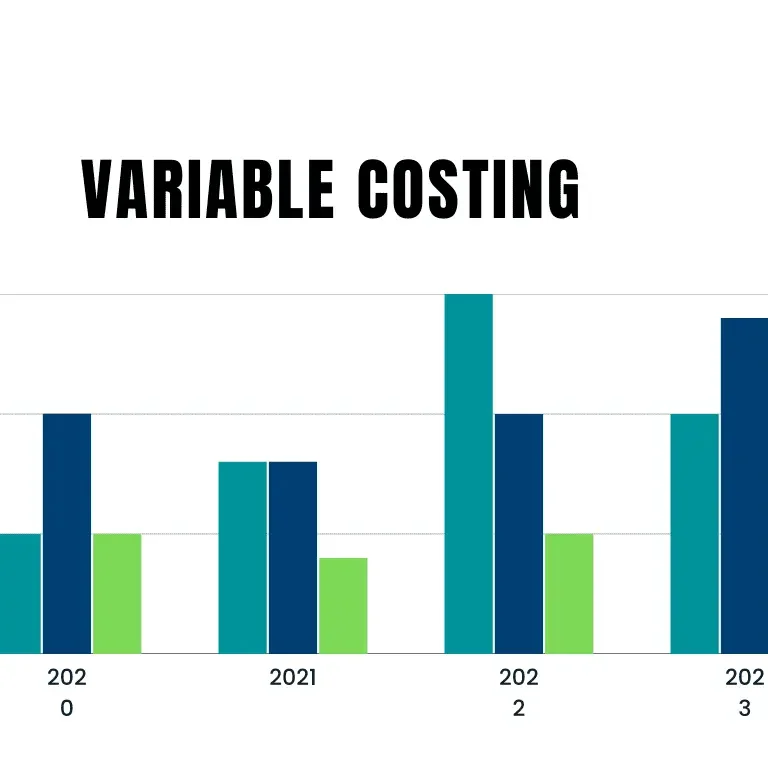
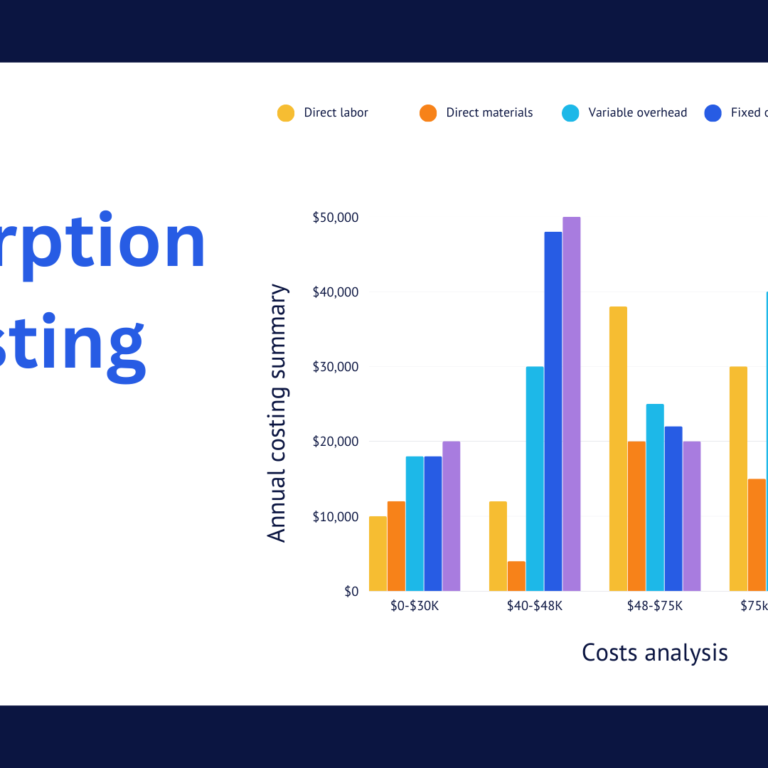
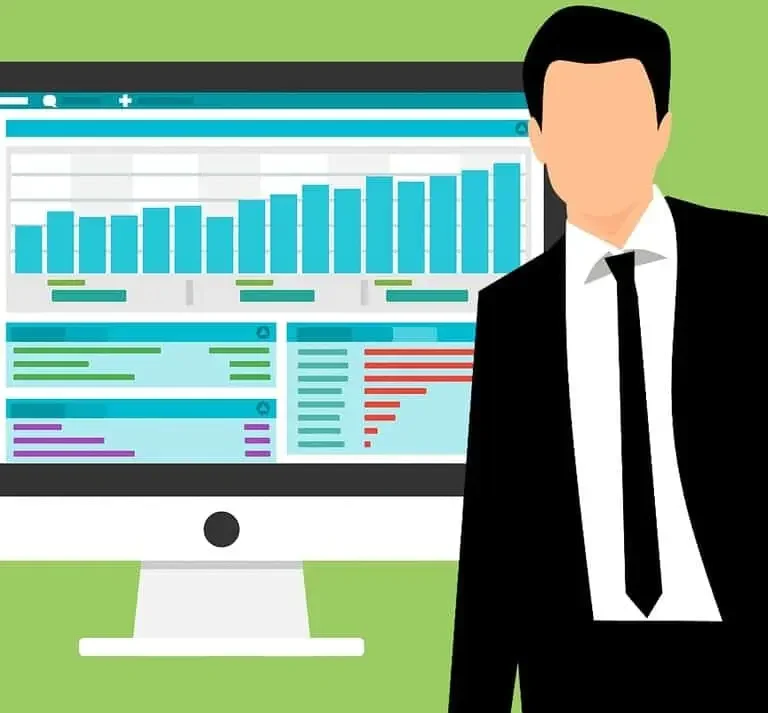
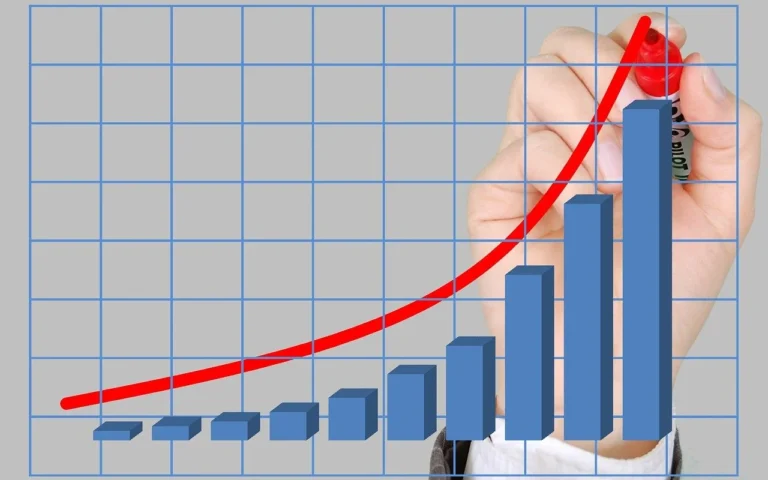
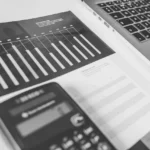



купить диплом в самаре https://www.school-10-lik.ru .
Спешите воспользоваться нашими услугами по ремонту автокондиционеров.
Заправка и ремонт автокондиционеров diagnost-avtokondicioner.ru .
купить диплом в уссурийске https://www.vm-tver.ru .
Где найти сервис с опытными специалистами по проверке кондиционера авто в Москве, как не ошибиться.
Заправка проверка кондиционера авто важна для его бесперебойной работы. https://zapravka-avtokonditsioner.ru/ .
Здравствуйте!
Хочу рассказать о своем опыте по заказу аттестата пту, думал это не реально и стал искать информацию в сети, про купить диплом бурильщика, купить аттестат за 9 класс, купить диплом строителя, купить диплом в иваново, купить диплом в сочи, постепенно вникая в суть дела нашел отличный материал здесь http://lubov.listbb.ru/viewtopic.php?f=2&t=379 и был очень доволен!
Теперь у меня есть диплом столяра о среднем специальном образовании, и я обеспечен на всю жизнь)
Хорошей учебы!
http://gti-club.ru/forum/member.php?u=23001
Здравствуйте!
Хочу поделиться своим опытом по заказу аттестата ПТУ. Думал, что это невозможно, и начал искать информацию в интернете по теме: купить диплом геодезиста, купить диплом в пскове, купить диплом в калуге, купить диплом в йошкар-оле, купить бланк диплома. Постепенно углубляясь, нашел отличный ресурс здесь: http://premium.listbb.ru/viewtopic.php?f=2&t=341, и остался очень доволен!
Теперь у меня есть диплом сварщика о среднем специальном образовании, и я обеспечен на всю жизнь!
Хорошей учебы!
http://myfootballday.ru/diplom-bez-usiliy-vash-put-k-znaniyam
Привет всем)
Хорошо быть студентом, пока не придет пора писать диплом, что и произошло со мной, но не стоит отчаиваться, ведь есть хорошие компании что помогают с написанием и сдачей диплома на хорошие оценки!
Изначально искал информацию про купить аттестат за 11 класс, купить диплом медицинского училища, купить диплом в тобольске, купить диплом в прокопьевске, купить диплом в красноярске, потом попал на http://turservisnews.ru/diplom-bez-usiliy-vash-lichnyiy-put-k-znaniyam
http://turservisnews.ru/kupit-diplom-vash-pervyiy-shag-k-uspeshnoy-karere
http://algebra.bestbb.ru/viewtopic.php?id=532#p562
https://www.politikforum.ru/member.php?u=13385920
и там решили все мои учебные заботы!
Успешной учебы!
http://pdlspd.listbb.ru/viewtopic.php?f=3&t=324
Наша фирма предлагает быстрый и эффективный способ для ликвидации онлайн-ресурса вашего конкурента.
Используются эффективные технологии, проверенные временем:
– Ликвидируем сайты по любым ключам.
– 300000-400000 спамных беклинков.
– Безостановочный спам основного емейла организации письмами с рассылками
– Устранение позиций сайта в поисковике по любым коммерческим ключам.
– Применяются уникальные технологии. Многолетний опыт работы.
– Гарантия возврата денег через 3 месяца.
– Полная отчётность.
– Абсолютная конфиденциальность нашей работы. Никто не узнает про вас и нашу деятельность.
Стоимость услуги 77$
Отчётность.
Оплата: Yoo.Money, Bitcoin, МИР, Visa, MasterCard…
Принимаем USDT
Telgrm: https://t.me/exrumer
Skype: Loves.Ltd
https://www.seobrand.com
https://xrumer.cc/xrumer/kak-zabanity-sait/
Как проверить смету на соответствие?.
Проверка смет в формате ГГЭ позволяет оценить точность планируемых затрат. https://proverka-smet-msk.ru .
XRumer – это наиболее пользующийся популярностью также лучшее программное обеспечение для создания ссылок да продвижения сайтов. Он используется для машинального прогона сайтов через разные соц сети, форумы, блоги (а) также другие интернет-ресурсы.
http://www.botmasterru.com/product33230/
Купить XRumer Оффициально
http://www.botmasterru.com/product33230/ – https://xrumer.cc/i/x.png
Здравствуйте!
Хочу поделиться своим опытом по заказу аттестата ПТУ. Думал, что это невозможно, и начал искать информацию в интернете по теме: купить диплом в асбесте, купить диплом в муроме, купить диплом в черкесске, купить диплом в архангельске, купить диплом маляра. Постепенно углубляясь, нашел отличный ресурс здесь: http://ilovehabbo.bbon.ru/viewtopic.php?id=1373#p28748, и остался очень доволен!
Теперь у меня есть диплом сварщика о среднем специальном образовании, и я обеспечен на всю жизнь!
Хорошей учебы!
http://sensei.co.il/index.php/??????????_???????????_???_??????????_?????:_???_??????_??????,_??????????_?????_????????
купить диплом в нижнем тагиле купить диплом в нижнем тагиле .
Здравствуйте!
Хочу поделиться своим опытом по заказу аттестата ПТУ. Думал, что это невозможно, и начал искать информацию в интернете по теме: купить диплом в кинешме, купить диплом цена, купить диплом в балашихе, купить диплом в костроме, купить диплом в уфе. Постепенно углубляясь, нашел отличный ресурс здесь: http://o97765bq.beget.tech/2024/05/17/poluchite-diplom-mechty-legko-i-dostupno.html
http://kinogonews.ru/kupit-diplom-v-moskve-vyisokoe-kachestvo-i-nadezhnost
https://idi.atu.edu.iq/?p=14443
http://promintern.listbb.ru/viewtopic.php?f=16&t=395
, и остался очень доволен!
Теперь у меня есть диплом сварщика о среднем специальном образовании, и я обеспечен на всю жизнь!
Удачи!
https://idi.atu.edu.iq/?p=14537
Что нужно знать о профессиональном ремонте кожаной мягкой мебели.
Комплексная реставрация кожаной мебели — опыт и профессионализм. http://remont-kozhanoj-mebeli.ru/ .
Секреты успешной чистки дорогих антикварных изделий.
Безупречная химчистка антикварной мебели — качественно и быстро. http://www.ximchistka-antikvarnoj-mebeli.ru .
I got this site from my pal who told me about this web site and
now this time I am browsing this web site and reading very informative content at this place.
Every time I read a new post, I feel like I’ve learned something valuable or gained a new perspective. Thank you for consistently putting out such great content!